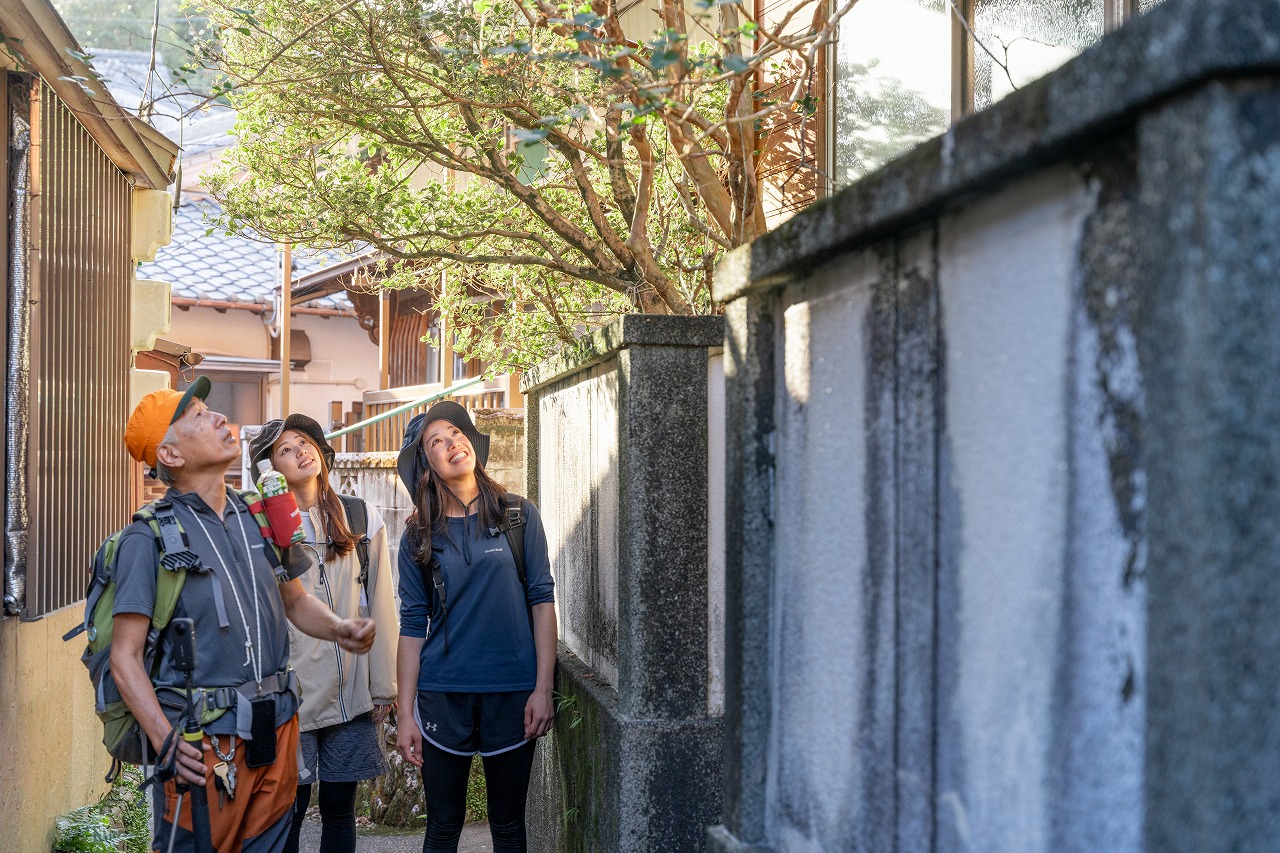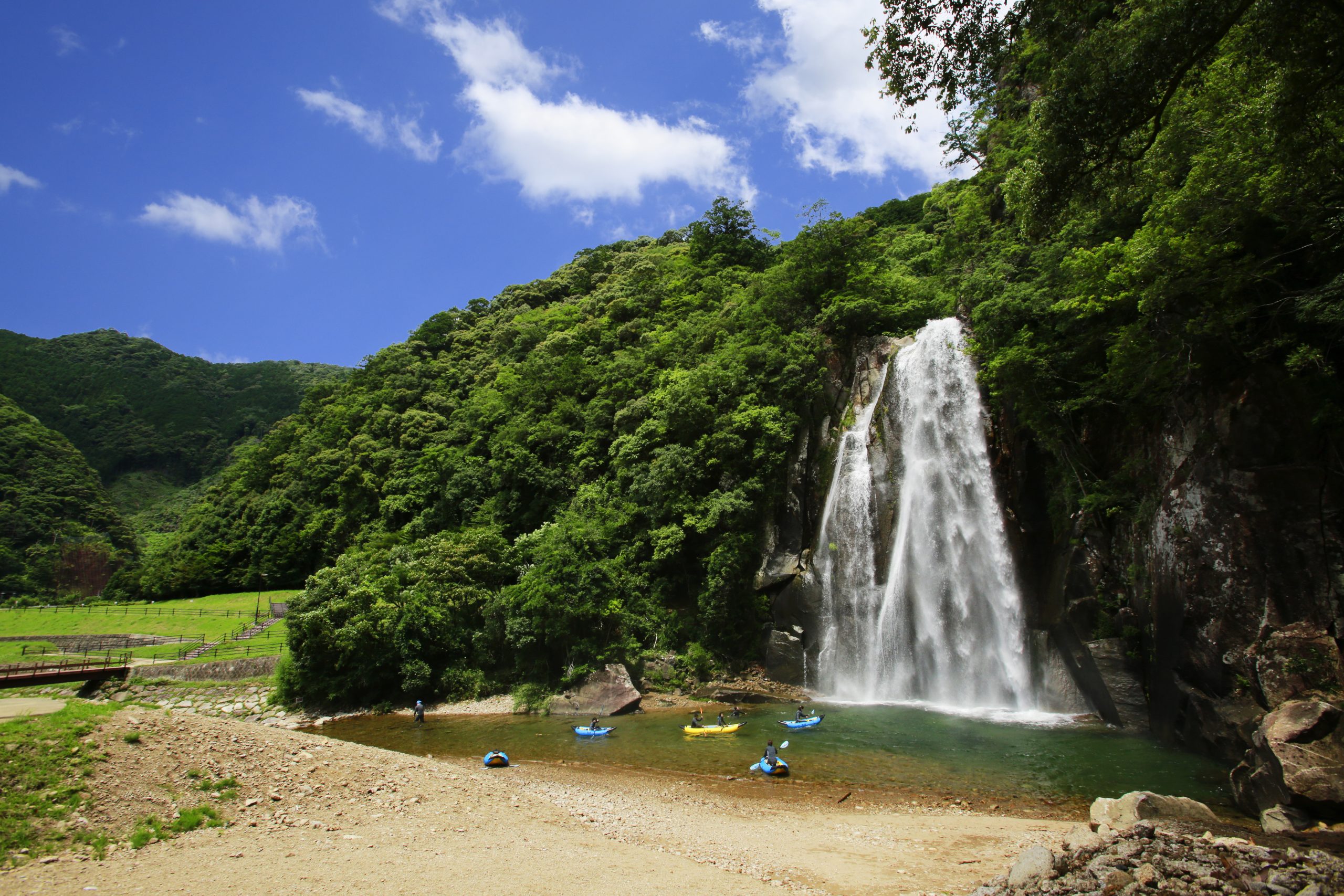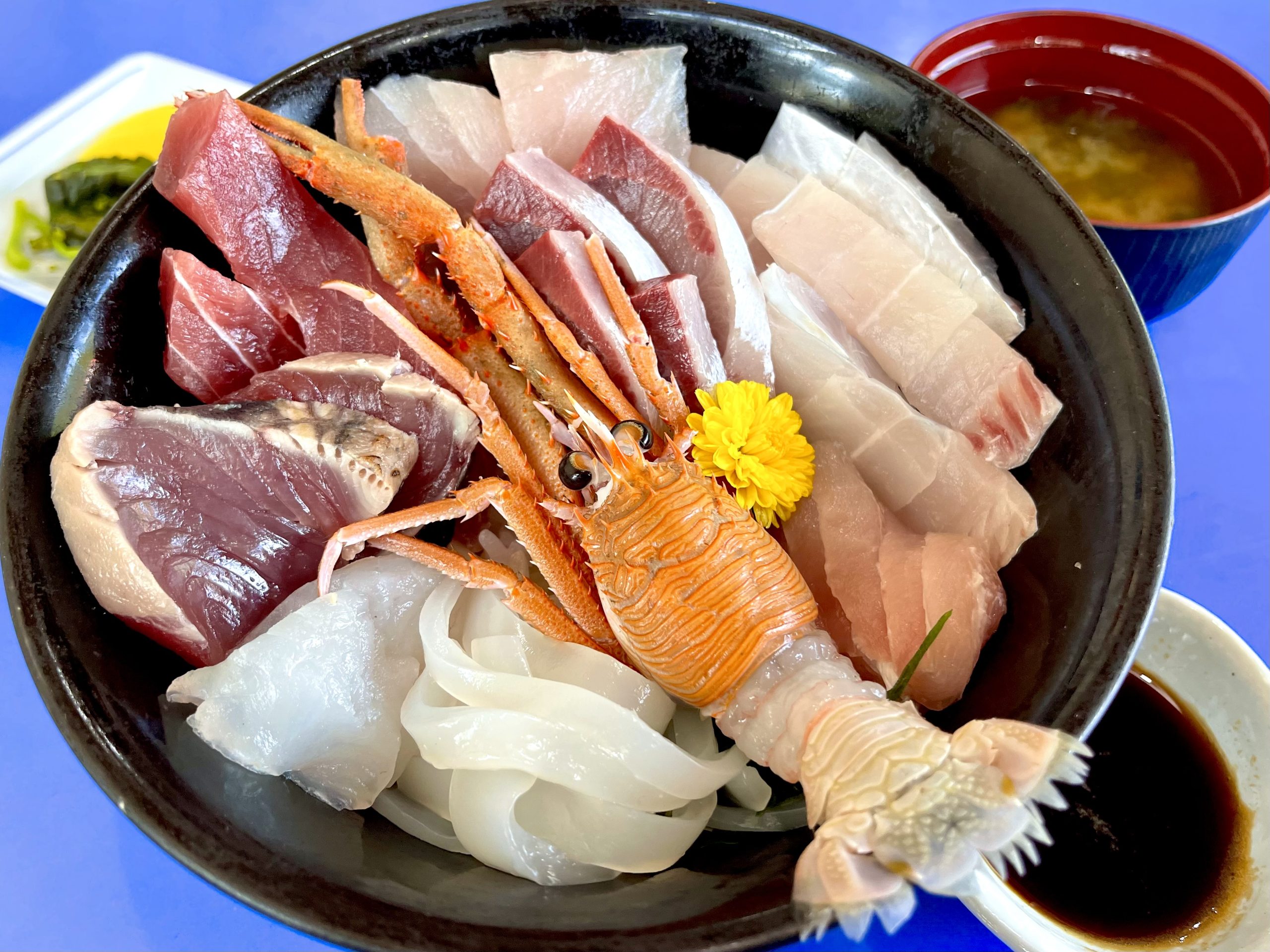The Special Product Series – Traditional Japanese Crafts
Update:
Owase City
Kumano City
Mihama Town
Higashikishu boasts a rich heritage of traditional crafts that have been passed down for centuries.
Although the world of skilled traditional crafts may seem inaccessible or incompatible with modern lifestyles, understanding the history, challenges, and dedication of those involved can reveal their charm and the reason for their enduring legacy.
Let’s explore a few examples of the treasured items that have been carefully nurtured and handed down through generations.
▼INDEX
1 Owase Wappa (Traditional Handicraft) [Owase City] Municipal Intangible Cultural Asset Designated Traditional Crafts of Mie Prefecture
2 Nachiguro Black Stone [Kumano City] Designated Traditional Crafts of Mie Prefecture
3 Ichigimomen(Ichigi Cotton)[Mihama-cho] Designated Traditional Crafts of Mie Prefecture
1Owase Wappa (Traditional Handicraft) [Owase City] Municipal Intangible Cultural Asset Designated Traditional Crafts of Mie Prefecture
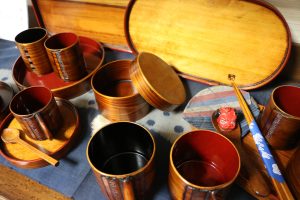
The Owase Wappa exudes a dignified ambiance with its exquisite wood grain and shiny lacquer coating.
This bento box is crafted from Owase cypress, renowned throughout Japan for its superb quality, and the wood’s ability to retain moisture ensures that chilled rice remains fluffy and delicious. With each use, the lacquer’s luster intensifies, enhancing its attractiveness.
This traditional craft has been cherished by the miners and fishermen of Owase, a region blessed with both mountains and sea, for many years.
The origins of Wappa are not entirely clear, but it is believed that during the early Edo period, the demand for tableware increased as more workers were employed in forestry.
Bent-wood craft (wappa) was used to make tableware for these workers.
Around the same time, skipjack tuna fishing became popular, and it is said that fishermen also used Wappa on their boats.
It takes approximately two months and involves 45 stages to produce Owase Wappa.
The sole producer of this craft is Nushikuma, established in Mukai, Owase City in Meiji Year 20 (1887) .
The company has preserved traditional methods since its inception and continues to refine its products.
The third-generation owner, Mr. Shoji, and the fourth-generation owner, Mr. Koshi, were recognized as “intangible cultural assets” of Owase City for their expertise in Nushikuma techniques in Showa Year 52 (1977) and Heisei Year 25 (2013), respectively.
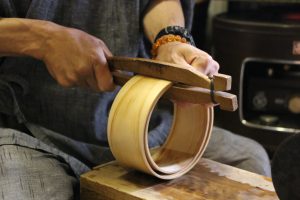
The production process of Owase Wappa involves several meticulous steps.
First, the finest quality wood is carefully selected, cut and shaved into thin sheets, and then soaked in hot water.
These sheets are then bent and left to dry under the shade.
After drying, small holes are made in the bent cypress using a chisel, and the overlapping parts are tied together with pieces of Sakura cherry tree bark.
However, this process can be challenging on rainy or humid days since the holes tend to close up quickly.
Gradually, the container becomes more rigid.
Then, a round bottom plate is affixed and secured with bamboo nails, and over five coats of lacquer are meticulously applied.
Each piece is handcrafted with all-natural materials, ensuring the utmost attention to detail.
These authentic items made from high-quality materials make great gifts.

Moreover, the Suri-Urushi type (a type of lacquer art), which highlights the stunning wood grain, is microwave-safe, adding to its convenience.
The Owase Wappa bento box offers numerous advantages, especially due to the compatibility of cypress and rice.
The natural properties of cypress absorb the moisture of the rice, preventing it from becoming sticky, and its anti-bacterial properties keep the rice from spoiling.
With regular use, the box enhances the flavor of the rice, and its durability increases over time.
With proper maintenance, such as repainting the lacquer, the bento box can be passed down to future generations.
2 Nachiguro Black Stone [Kumano City] Designated Traditional Crafts of Mie Prefecture
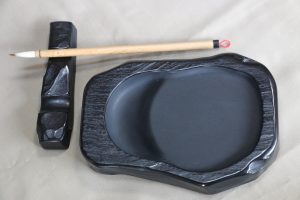
Known since the Heian period, Nachiguro Black Stone emits a stunning sheen when polished.
This traditional craft is a cherished souvenir of Kishu, and is still preserved by artisans in Nachiguroishi no Sato’s Kamikawa-cho today.
The Nachiguro Black Stone is often mistakenly associated with the neighboring Wakayama Prefecture, home to Mt. Nachi, due to its name.
However, the only place in Japan where this black stone can be quarried is Kamikawa-cho, located deep in the mountains of Kumano City.
In the mid-Meiji period, the quarrying of Nachiguro Black Stone began to flourish and peaked around Showa 50 (1975) when there were 26 manufacturing and sales offices in Kamikawa-cho.
However, over time, the number has dwindled, and only a few remain to support this important industry that has been in existence for a long time.
Nachiguro Black Stone is a versatile material that is not only used for black Go (a strategic board game) pieces and inkstones, but also for practical items such as floor stones and ornaments, thanks to its fine quality and elegant jet-black appearance. Therefore, it is an excellent choice as a gift or souvenir.
The initial step in the production process involves cutting the raw stones received from the quarry to the rough size and shape required for each product.
To create Go stone pieces, stone boards are mechanically drilled to obtain cylindrical discs with a diameter of approximately 2.5 cm.
These discs are then sorted based on their thickness and polished.
For crafting an inkstone, a specially-designed carving chisel with a blade made of a unique alloy for stone carving is employed, requiring the use of full-body strength to carve the stone.
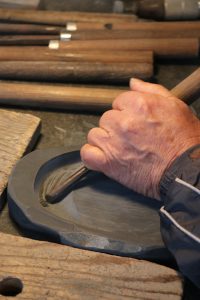
It is a true showcase of craftsmanship!
When the chisel is used to scrape the stone instead of carving it, followed by careful polishing with sandpaper, the stone’s blackness is immediately enhanced due to the nature of the stone grain.
In addition to its aesthetic beauty and smoothness, special attention is also given to ensuring that the inkstone can be ground with ease.
Each stone is treated differently, based on its unique characteristics, and it is the skillful craftsmanship that contributes to the stunning brilliance of Nachiguro Black Stone.

Resin is blended with powdered Nachiguro black stone to produce molds of diverse forms known as “New Nachiguro.”
This method enables the uniform production of products with intricate shapes that may prove challenging to carve onto rough stones, while preserving their brilliance and luster.
Recently, it has been drawing attention as a power stone, leading to the launch of various highly sought-after products, including beauty stones, straps, incense holders, Yatagarasu (three-legged crow) figurines, and many more.
3 Ichigimomen [Mihama-cho] Designated Traditional Crafts of Mie Prefecture
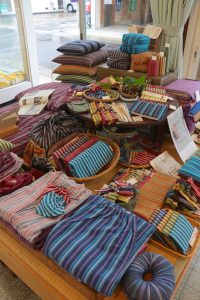
Ichigimomen, also known as Ichigi cotton, has gained popularity for its unique vertical striped pattern and its ability to become softer and more comfortable with each use.
This fabric was first introduced in the Ichigi region, located along the World Heritage Kumano Kodo Hamakaido, during the Meiji period. At its peak, there were around 45 textile producers manufacturing this fabric.
The Ichigi region, located near the mountains and close to the coast, was once devastated by storm surges that left the village impoverished and unsuitable for farming.
However, during the mid-Meiji period, Mantaro Okubo introduced loom weaving techniques from the Yamato region and began cultivating a plant called ai, which is the source of Japanese indigo.
After many experiments, the local cotton was finally created as a means of saving the village from ruin.
The fabric gained popularity as a material for work clothes like Monpe (loose agricultural work-trouser) and was even exported to Yamato and Yoshino.
The industry grew rapidly, involving the whole village.
Unfortunately, after the war, the advent of chemical fibers and mass production brought about the decline of indigo-dyed cotton.
The number of weavers dwindled to only two producers by the end of the Showa period, with one of them being Ohata Textile Factory.
Currently, Hirotaka Mukai, who is the third-generation owner of Mukai Futon Store in Kimoto-cho, Kumano City, is the only weaver of Ichigimomen fabric.
The store offers a range of easy-to-use items, including Ichigimomen futons, business card holders, and plastic bottle holders.
Initially, the fabric for the futons was supplied by Ohata Textile Factory, but when Mr. Ohata retired due to his advanced age, Mr. Mukai was determined to preserve the tradition of Ichigimomen.
He requested permission to use the factory and took over as the weaver.
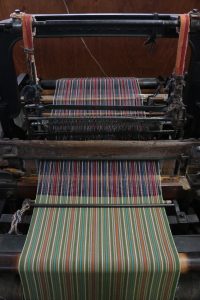
At the Ichigi factory, the rhythmic sound of the power loom driven by a belt motor fills the air.
Although it is a power loom, its weaving speed is only about four times faster than that of a hand loom.
This weaving process results in a soft texture similar to that of hand-woven cotton, which creates durable and breathable cotton.
The secret to the fabric’s texture lies in the use of the finest tanshi (single yarn).
To withstand the process, tanshi is starched with glue before weaving.
The cotton becomes smoother with each wash, making it highly desirable for those who continue to wear it, and it is often referred to as “the best fabric for Monpe.”
Additionally, it is extremely comfortable as a futon fabric.
The factory produces a range of designs, from prints reminiscent of the Taisho and Showa era to modern designs such as solid colors and border prints.


